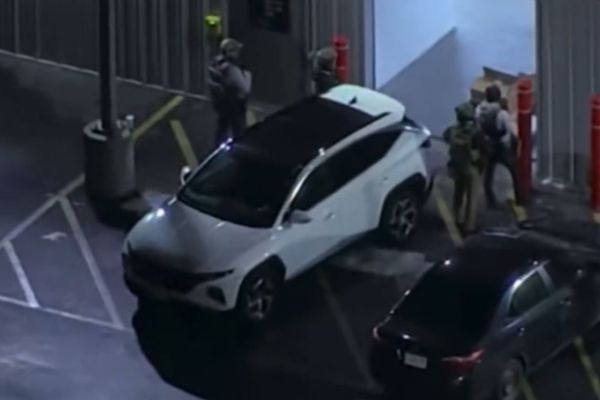
Most people don’t realize that one of the most dangerous food safety mistakes happens in their own kitchen — before they even start cooking. If you’ve ever left frozen chicken, beef, or pork sitting on the counter to thaw, you’re not alone. It’s a shortcut millions of home cooks take, but it’s also one of the riskiest meat thawing habits you can have. While it might seem harmless, this method creates the perfect breeding ground for harmful bacteria like Salmonella and E. coli. The truth is, improper thawing doesn’t just ruin dinner — it can make your entire family sick.
The Science of Unsafe Thawing
When meat sits at room temperature for too long, parts of it reach what experts call the “danger zone” — between 40°F and 140°F. Within this range, bacteria multiply rapidly, doubling in number every 20 minutes. That means even if the center of your chicken breast is still frozen, the outer layer can already be teeming with microbes. Cooking might kill surface bacteria, but toxins produced during that meat thawing window can remain. The USDA warns that just a few hours on the counter can turn safe meat into a serious health risk.
Why Microwaving Isn’t the Best Solution Either
It might be tempting to use your microwave’s “defrost” button when you’re in a rush, but even that method has drawbacks. Microwaves heat unevenly, leaving some parts of the meat partially cooked while others remain icy. This creates the same bacterial danger zone you’re trying to avoid. Additionally, the texture of meat can change dramatically, becoming rubbery or dry before you even cook it. While microwaving works in emergencies, it should never replace proper meat thawing in the refrigerator or cold water.
The Safest Way to Thaw Meat — According to Experts
The gold standard for meat thawing is slow and steady refrigeration. Place the meat in its packaging or a sealed container on the bottom shelf of your fridge to avoid cross-contamination. This method keeps the temperature below 40°F, allowing it to thaw evenly and safely. It does take time — roughly 24 hours for every 4 to 5 pounds of meat — but it completely eliminates the risk of bacterial growth. For large cuts like roasts or turkeys, planning ahead is key to keeping your kitchen safe.
The Cold Water Method That Actually Works
If you need to speed things up, there’s a safe shortcut that food safety experts approve of — the cold water method. Submerge the sealed meat in a bowl of cold water, changing the water every 30 minutes to maintain a safe temperature. Small packages of meat may thaw in an hour or less, while larger portions can take up to three hours. Never use warm or hot water, which pushes the meat right back into the bacterial danger zone. With this method, meat thawing stays quick and food-safe without compromising texture or taste.
Refreezing After Thawing? Be Careful
Many people assume it’s fine to refreeze meat if they change their minds after thawing — but that depends on how it was thawed. If you thawed meat in the refrigerator and kept it below 40°F, it’s safe to refreeze, though you may notice some loss in texture. However, if it sat out on the counter or was thawed in warm water, it’s no longer safe to freeze again. Refreezing at that point locks in bacteria and increases the risk of foodborne illness later. Safe meat thawing practices don’t just protect your family today — they prevent future problems too.
How to Tell If Meat Has Gone Bad After Thawing
Even if you follow proper meat thawing guidelines, it’s smart to double-check before cooking. Spoiled meat often develops a sour or metallic odor, a slimy texture, or a grayish color. If you notice any of these signs, don’t risk it — throw it out immediately. The “when in doubt, toss it out” rule applies to all proteins, whether it’s chicken, beef, or seafood. Trust your senses; a few dollars’ worth of wasted meat is better than hours of food poisoning misery.
Safe Cooking Starts With Safe Thawing
The first step in healthy cooking isn’t seasoning or temperature — it’s food safety. Proper meat thawing sets the foundation for every meal by preventing bacterial growth before cooking even begins. Whether you use the refrigerator or cold water method, patience truly pays off in the kitchen. By avoiding shortcuts like countertop thawing, you protect your family from foodborne illness and ensure your meals stay delicious and safe. Remember, it’s not just about what you cook — it’s about how you prepare it.
Have you ever made this meat thawing mistake without realizing the risk? What’s your go-to method for thawing safely? Share your thoughts in the comments below!
You May Also Like
- What You’re Not Being Told About Store Bakery Safety
- Are Ready-To-Eat Meals Safe After Hours in Transit?
- Is It Safe? What Happens If You Drink Beer Past Its Expiration Date
- Here’s How You Can Still Use Expired Grocery Coupons
- 9 Foods You Should Never Eat Past the Expiration Date, No Exceptions
The post Stop! This Meat-Thawing Mistake Could Put Your Family at Risk appeared first on Grocery Coupon Guide.







